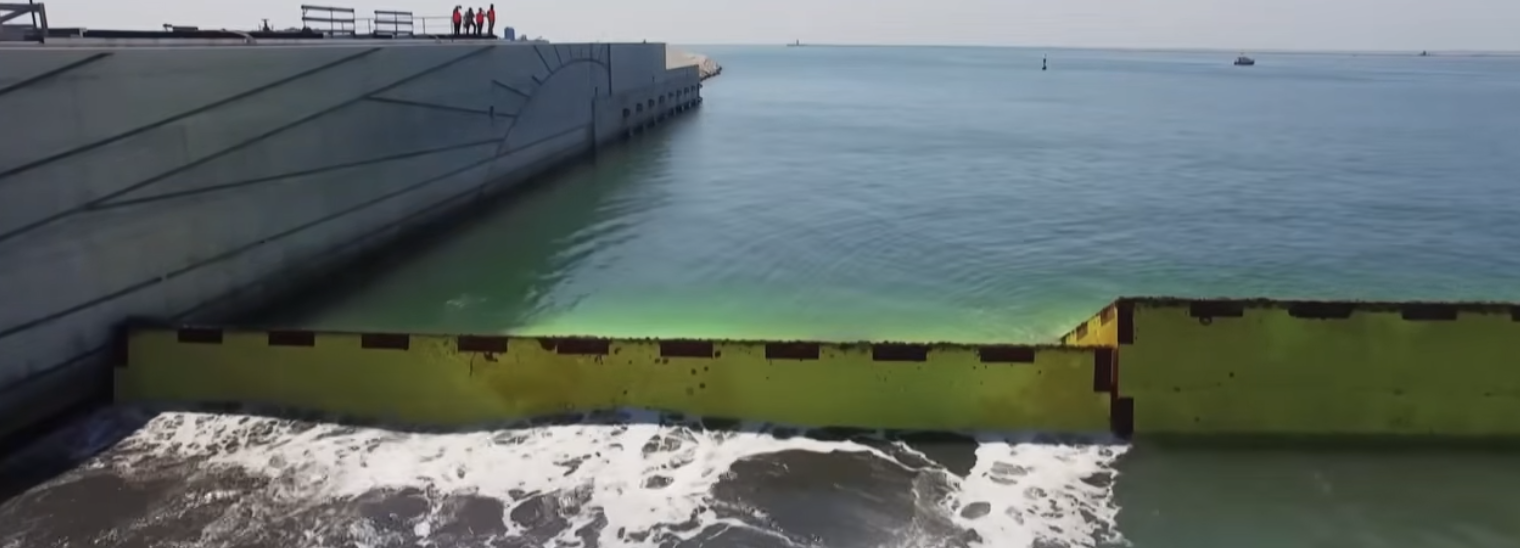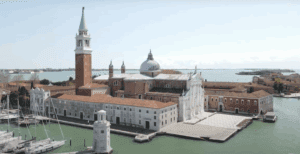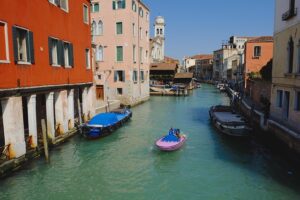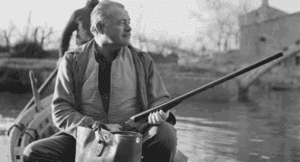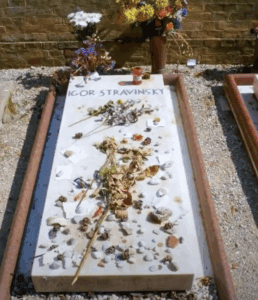Venice and the Rising Tide: How MOSE Protects the Floating City
Venice is often described as a dream — a marble city floating on water, a masterpiece of human imagination suspended between sea and sky. But behind the dream lies a daily reality: this beauty survives only through constant struggle. For more than a thousand years, Venice has balanced between land and sea, ingenuity and risk, beauty and fragility. Today, that balance is under threat like never before.
Visitors often ask us:
- “Is Venice really sinking?”
- “What happens when the city floods?”
- “And what exactly is the MOSE system — does it work?”
This article dives deep into those questions. We’ll explore how Venice was born from mud and courage, what happens when the tides rise, and how one of the world’s most ambitious engineering projects — MOSE — now stands between the city and the sea. More importantly, we’ll show you how Venetians live, adapt, and continue to thrive, even as the water rises around them.
🏗️ Part 1 — A City Born From the Lagoon
1.1 Venice’s Origins: Refugees in the Marsh
The story begins in the 5th century, when waves of refugees fled barbarian invasions sweeping across northern Italy. Seeking safety, they turned to the shallow marshlands of the Venetian lagoon — a place the invaders’ horses could not follow.
Here, they built something extraordinary. Thousands of wooden piles were driven deep into the mud. On top of them rose wooden houses, then churches, and eventually palaces of stone. Over time, canals replaced streets, and boats became the city’s only traffic.
Venice was a miracle of necessity — born from water, built on water, and protected by water. The lagoon became its moat, its highway, and its identity.
1.2 The Dance With Water
For centuries, Venetians managed their fragile world through a constant dance with nature. They built embankments, dredged canals, and created artificial islands. They lived not against the water, but with it — adjusting, rebuilding, and adapting after every high tide.
But what has changed in recent decades is not the dance — it’s the rhythm. Climate change has made tides more extreme, floods more frequent, and survival more complex. What once happened a few times a year now happens dozens of times each season.
💦 Part 2 — Acqua Alta: When Venice Goes Under
2.1 What Is Acqua Alta?
Acqua alta literally means “high water.” It’s a natural phenomenon caused by a mix of tides, wind, and air pressure. When these forces align, sea levels rise — sometimes dramatically — flooding the lowest parts of the city.
- At 80 cm above sea level, puddles appear in low streets.
- At 110 cm, St. Mark’s Square and parts of Dorsoduro go underwater.
- Beyond 140 cm, the city begins to shut down.
High water is both ordinary and extraordinary. Venetians live with it — they know the sound of the sirens, the patterns of the tide, and the smell of the lagoon when it rises. But lately, those sirens have sounded far too often.
2.2 Life During a Flood
Imagine a November morning in Venice. You wake to the sound of distant sirens echoing over the rooftops — one tone, then two, then three, warning that water is on the way. You open the shutters: the calle below glistens like a mirror. Shopkeepers rush to place metal barriers across their doors. Locals pull on rubber boots. Wooden walkways — passerelle — appear in the main squares, connecting homes to shops like temporary bridges.
Life continues. Children splash their way to school. Cafés reopen within hours. The postman delivers mail by wading through ankle-deep water. For tourists, it’s a spectacle. For Venetians, it’s just Tuesday.
But when floods come too often, even a city built on water can drown in its own resilience.
2.3 1966: The Year Venice Nearly Died
On November 4, 1966, a perfect storm struck. A violent scirocco wind pushed the sea northward into the lagoon while torrential rains swelled the rivers. The tide reached 194 centimeters — the highest ever recorded.
The entire city went underwater. Shops and homes were destroyed. Churches filled with brackish water. Priceless art and archives were ruined. Venice had always lived with water, but never like this.
The flood became a turning point. The world finally realized that this jewel of civilization was vulnerable — and that something had to be done to protect it.
2.4 2019: The Modern Warning
More than half a century later, on November 12, 2019, history repeated itself. The water rose to 187 centimeters — the second-highest tide in history. Boats broke loose and crashed into docks. Electric systems failed. St. Mark’s Basilica flooded for the sixth time in its 1,200-year life. Residents watched decades of memories vanish under saltwater.
Images of flooded piazzas and floating chairs went viral. The world asked again: “Can Venice be saved?”
🌍 Part 3 — The Climate Crisis and Venice’s Future
3.1 Rising Seas, Sinking Ground
Venice faces a double threat: the sea is rising, and the land beneath it is sinking.
- Over the last century, the Adriatic Sea has risen by about 30 centimeters.
- The city itself continues to subside a few millimeters each year.
Climate models predict even higher sea levels in the coming decades, making floods that were once “once-in-a-century” events dangerously common.
3.2 Extreme Weather and Changing Tides
Venice’s climate is shifting. Winters bring stronger storms, unpredictable tides, and sudden wind surges. Summer heatwaves strain infrastructure and increase lagoon evaporation. The very forces that once protected the city — the tidal rhythm of its lagoon — now threaten it.
Venice has become a global symbol of climate change: a warning, a laboratory, and a hope.
⚙️ Part 4 — MOSE: Venice’s Hidden Shield Beneath the Sea
4.1 What Is MOSE?
After decades of studies, protests, and political battles, Italy launched one of the most ambitious engineering projects in history: MOSE — the Modulo Sperimentale Elettromeccanico (Experimental Electromechanical Module).
The system consists of 78 mobile barriers installed at the lagoon’s three inlets — Lido, Malamocco, and Chioggia. When a dangerous tide approaches, the gates rise from the seabed, sealing off the lagoon from the Adriatic Sea.
It’s a colossal feat of engineering designed to protect a city built 1,500 years ago on wooden stilts.
4.2 How MOSE Works
Normally, the gates rest flat on the seabed, filled with seawater. When a high tide is forecast, compressed air is pumped in, forcing them to rise and create a temporary barrier. When the danger passes, they are refilled with water and return to rest on the bottom.
Think of MOSE as Venice’s invisible guardian — silent, submerged, and rising only when needed.
When activated, the system can protect the lagoon for several hours, preventing tides up to three meters high from entering. It’s not a permanent wall, but a dynamic defense that respects the lagoon’s natural ecosystem.
4.3 A Timeline of Triumphs and Delays
- 1966: After the catastrophic flood, initial studies begin.
- 1980s: Engineers propose mobile barriers as the only realistic solution.
- 2003: Construction officially begins.
- 2014: Political scandals and corruption slow the project.
- 2020: MOSE is activated for the first time — and it works.
- 2023: The system becomes fully operational, protecting Venice more than 20 times a year.
Despite delays, MOSE has already changed history. In the autumn of 2020, it prevented what would have been another devastating 135-cm flood. St. Mark’s Basilica stayed dry for the first time in decades.
4.4 Does MOSE Really Work?
Yes — and better than most dared hope. Since 2020, MOSE has protected Venice during numerous high tides, including several that would once have closed the city. For the first time in generations, Venetians can face storm season without fear.
But the system is not without challenges:
- Its maintenance costs millions each year.
- Frequent activation may affect lagoon ecology and fish migration.
- Rising sea levels could eventually exceed the system’s design limits.
Even so, most locals agree: MOSE is not perfect, but it’s hope made visible.
🧠 Part 5 — Living With Water: The Venetian Way
5.1 Everyday Adaptation
Even with MOSE, Venetians keep their boots ready. Flood barriers still guard doorways. Pumps stand by in basements. Sirens still sound when tides climb faster than expected. Acqua alta may be less frequent, but it’s still part of the rhythm of life.
Children still laugh while splashing through puddles on their way to school. Baristas wipe down flooded counters and serve coffee again within an hour. Artisans move their tools to higher shelves, then return to work as the water recedes.
5.2 Stories of Resilience
Luca, age 10 wakes to his mother handing him rubber boots. The siren has sounded. He giggles, racing through the flooded campo to school, seeing it as an adventure.
Giovanna, the bookseller near Rialto lost her collection to the 2019 flood. Now, thanks to MOSE, she sleeps easier — though plastic covers remain stacked by the door, “just in case.”
Mauro, the Murano glass master, remembers when floods stopped deliveries of sand and color pigments. With MOSE, he can finally work through the winter — uninterrupted fire and art.
🌐 Part 6 — Venice as the World’s Warning (and Inspiration)
Venice’s struggle mirrors that of many coastal cities — from Miami to Bangkok, from New Orleans to Jakarta. Scientists study MOSE as a model for global adaptation, while travelers come to witness history unfolding in real time.
If Venice can protect itself, it gives hope to others. If Venice cannot, it warns the world of what’s to come.
Either way, the city remains humanity’s mirror — reflecting both our fragility and our brilliance.
🌱 Part 7 — How Travelers Can Help
7.1 Be Prepared and Respectful
- Visit between October and March with waterproof boots — acqua alta season.
- Use the Hi!Tide Venice app to check tide forecasts.
- Follow passerelle walkways and avoid splashing through flooded areas.
7.2 Support Local Life
- Buy from authentic artisans — visit Murano glassmakers and Burano lace-makers whose studios are often affected by floods.
- Stay overnight instead of day-tripping — your presence supports the local economy.
- Join guided experiences that highlight sustainability, not mass tourism.
7.3 Learn With Locals
Our Off-the-Beaten-Path Orientation Tour and Private Boat Tours show how the lagoon works — how tides flow, how Venetians move, and how life continues even when the water rises.
With Tour Leader Venice, you don’t just see acqua alta — you understand it. You’ll meet people who live with the tides every day and discover how technology, tradition, and humanity intersect in the most fragile city on Earth.
🚤 Part 8 — A Future on the Water
Venice has always existed between opposites — beauty and decay, stone and tide, danger and delight. Its future depends on both science and soul: the engineers maintaining MOSE, the artisans rebuilding workshops, the families choosing to stay, and the travelers who visit with respect and curiosity.
The city may still flood, but it will not fall. Its people won’t allow it.
To walk through Venice today is to witness resilience in motion — a city still fighting, still shining, still afloat.
🌊 Discover Venice Beyond the Floods — Book Your Private Tour Today →
Does the MOSE system really protect Venice from flooding?
Yes — and better than many expected. Since its first activation in 2020, MOSE has successfully prevented dozens of floods, keeping places like St. Mark’s Square and Rialto dry even during record-high tides. It works by lifting 78 mobile barriers from the seabed to temporarily close the lagoon from the Adriatic Sea. While maintenance is costly and sea levels continue to rise, for Venetians it’s the difference between daily fear and peaceful nights.
Can visitors still experience acqua alta in Venice?
Sometimes — but now it’s rare and shorter. With MOSE active, most of the historic center stays dry even during major tides. Minor flooding can still appear in low areas during heavy storms, especially in winter. If you visit between October and March, bring waterproof boots and use the Hi!Tide Venice app to track conditions in real time. Experiencing acqua alta safely can be fascinating — a glimpse into how Venetians have lived with the sea for centuries.
How can travelers support Venice’s resilience against climate change?
Travel slowly, stay locally, and spend consciously. Choose private, sustainable experiences such as a Venice lagoon tour or a sunset bragozzo cruise. Visit authentic artisans — like Murano glassblowers — and support workshops that preserve heritage rather than mass souvenirs. Every mindful traveler helps Venice remain vibrant and alive for generations to come.

